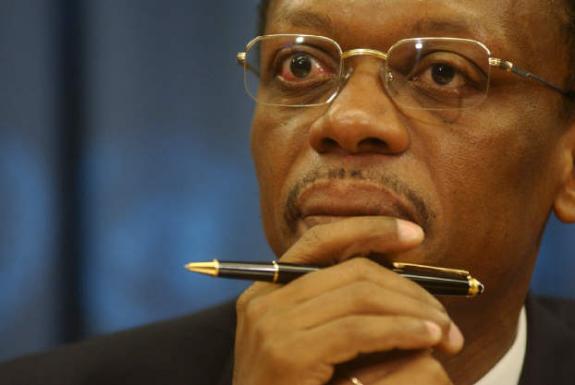Deeps > Representing Bois Caïman > Bois Caïman as “Religion” > Curse or “Culture”?
By Lenny Lowe
By now, the memory of the 2010 earthquake in Haiti has begun to fade from global memory in favor of other tragic stories in the media. But, the earthquake and its effects are still very much a part of life for nearly every Haitian. In addition to the loss of life and property, there was a population redistribution that strained already broken local economies. Perhaps most significantly, the nation that was already a hub for American Protestant mission organizations and NGOs has become almost filled to the point of bursting with even more.
Even prior to the earthquake, evangelical-styled Christianity was on the rise among Haitians, especially those “Neo-Charismatic” movements which emphasize Holy Spirit possession, healing, and speaking in “tongues.” But, the growth of evangelical Christianity in Haiti has not only brought new forms to Haitian religion but also new narratives of Haitian history. Perhaps the most well-known version of this was summarized just after the earthquake in the controversial comments made by charismatic evangelical leader Pat Robertson:
As Bertin Louis of the University of Tennessee has pointed out, however, far more Haitians are inclined to agree with this narrative than Pat Robertson’s critics would expect. Click here for Dr. Louis’s blogpost on the topic. So, what explains this dramatic retelling of the Bois Caiman narrative, which understands the ceremony not as a slave revolt but as a blood pact with Satan? In recent years, anthropologist Elizabeth McAlister has focused her research on evangelical groups in Haiti, and she has uncovered links to a very particular movement within American evangelicalism that has achieved far-reaching global influence. The movement known as “Spiritual Mapping”, “Spiritual Warfare”, and sometimes more generally as “Third-Wave Evangelicalism” emphasizes legal and territorial realities within the spiritual realm. This movement, which emerged most saliently from the theological work of Fuller Theological Seminary professor C. Peter Wagner. Wagner has suggested that territories in the world are either owned by Christian spiritual powers (i.e. God via Jesus Christ) or demonic/satanic ones. Perhaps tellingly, there remains a large portion of the world in the “10-40 window” — the area between 10 degrees north of the equator and 40 degrees south of it — controlled by demonic spiritual authority. These equatorial demons, it is suggested, must be confronted and engaged in spiritual warfare. Spiritual warfare involves intense periods of prayer, invocations of the power of the Holy Spirit, and sometimes even territorial displays called “Jericho marches” in which evangelicals march and pray around a particular place to free it from demonic control.
Click on the following links for Elizabeth McAlister’s recent articles on the topic:
From Slave Revolt to a Blood Pact with Satan: The Evangelical Rewriting of Haitian History
Devil’s Logic: Behind Pat Robertson’s Haitian Blame Game
In 1991, when Aristide was inaugurated as President of Haiti in a landslide election, the new administration announced plans for a bicentennial celebration of Bois Caiman. Within the transnational world of evangelicalism, which by that point included vast Haitian-American networks, fears began to circulate that the nation was to be rededicated to Satan through a renewal of the blood pact. Evangelicals began to mobilize, and in 1997 organized a “Jericho march” to break the legal ownership of demonic powers and to “win” Haiti for Jesus. 
Then, in 2003, during Aristide’s second attempt to remain in power, the administration prepared for a massive bicentennial celebration of Haitian independence. As part of that celebration, Aristide announced Vodou (and Catholicism) as an officially recognized religion within Haiti, and as an “ancestral religion” and “an essential part of national identity.” This display of cultural politics codified the cultural politics of Vodou as folklore that began in the 1940s, but it also provoked evangelical fears once again. A “year of prayer” was declared in 2003 that joined American and Haitian evangelicals in “spiritual warfare” in an effort to “break the pact with Satan.” Click here for reflections on Bois Caiman as a curse in music.
The devastating earthquake of 2010 has once again renewed the debate over the religious significance of Bois Caiman, and once again, the stakes for Haitians are high. At every stage, from the early republic to the US Occupation, the Duvaliers, and now even post-Earthquake, the status of Vodou been closely linked to the historical narration of Bois Caiman.
How to cite this article: “’Culture’ or Curse?” Written by Lenny J. Lowe (2014), Deeps, The Black Atlantic Blog, Duke University, http://sites.duke.edu/blackatlantic/ (accessed on (date)).
